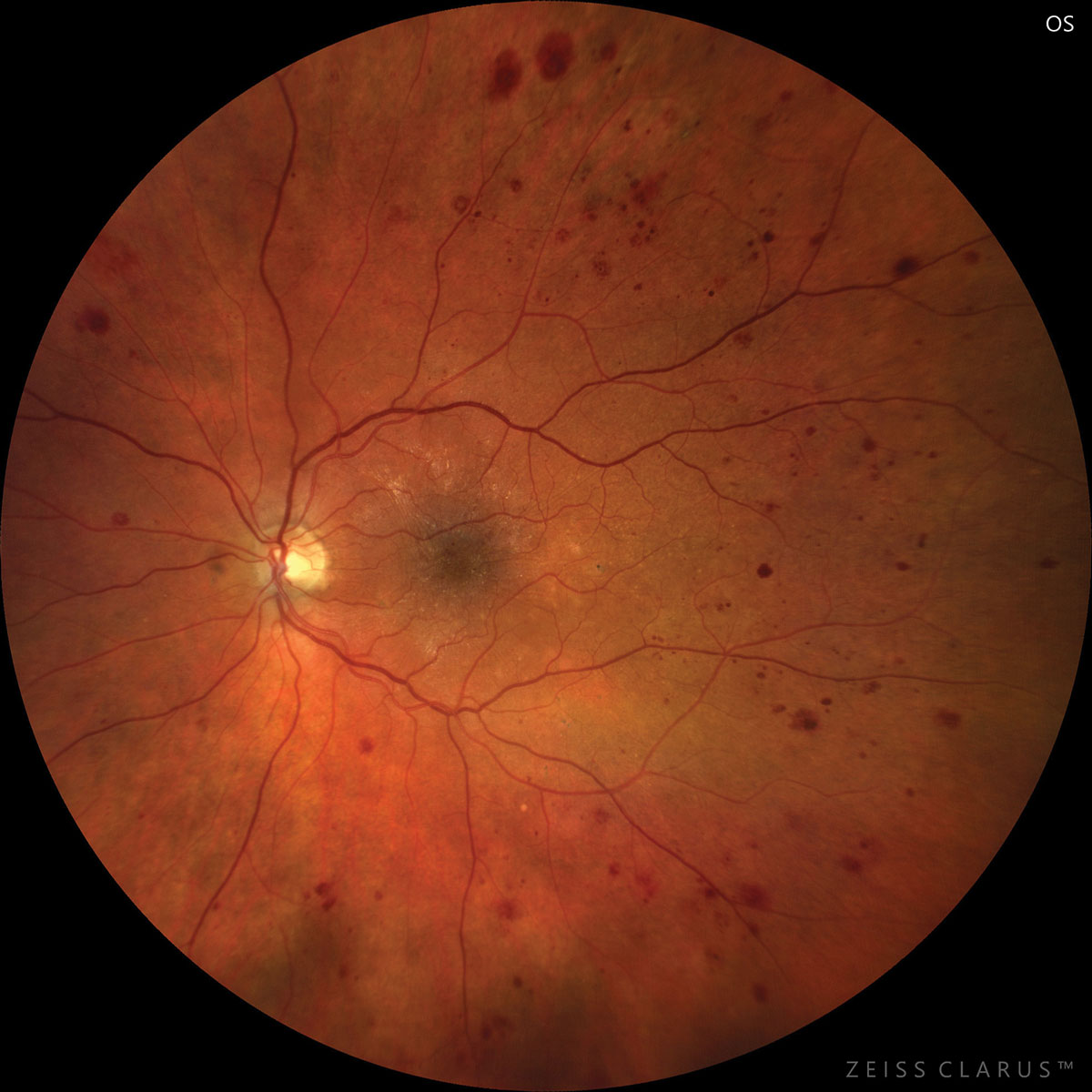 |
| Oxidative stress that occurs from diabetic retinopathy may also contribute to lenticular changes. Photo: Jay Haynie, OD. Click image to enlarge. |
Diabetes patients have up to a five-fold increased risk of cataract formation in their lifetime; however, not all of these cases are sight-threatening or require surgical intervention. Certain risk factors, including diabetic retinopathy (DR), place some patients with diabetes at a higher risk of developing cataracts severe enough to warrant surgery.
Taiwanese researchers recently gathered data on 3,297 DR patients, 13,188 diabetes control patients and 13,188 non-diabetes controls. Participant data was traced from 2000 through 2016. Throughout this period, 919 sight-threatening cataract events (27.9%) occurred in the DR patients, demonstrating a far greater relative risk than control subjects with diabetes (8.4%) or without (7.3%).
Sight-threatening cataracts were three times as likely among patients with DR vs. controls. Patients with proliferative DR or nonproliferative DR were found to have a comparable risk for sight-threatening cataracts, far higher than those with diabetes without any retinopathy. Other identified risk factors for sight-threatening cataracts included older age (>60 years), cardiovascular disease, chronic pulmonary disease, inflammatory disease, ocular disorders and oral or topical steroid use.
“The major pathophysiology of [diabetes] that induces cataracts is thought to be the fluid accumulation process,” the researchers explained in their study. “Hyperglycemia leads to the additional production of sorbitol from the polyol pathway for glucose metabolism in the lens. Due to elevated osmotic pressure caused by the buildup of sorbitol, excess fluid influxes the lens, which leads to cell swelling, membrane impairment and subsequent cataracts.”
By contrast, diabetic retinopathy “leads to intraocular hypoxia, ischemia and inflammation,” they continued. “A previous review article concerning proliferative DR indicated that reactive oxygen species, inflammatory cytokines and vascular endothelial growth factors were increased in the vitreous cavity, and previous laboratory studies indicated that oxidative stress is also a risk factor for cataract formation.” Therefore, DR likely influences the microenvironment in the eye more, increasing the catalysts for cataract development, they concluded.
Unlike previous studies that have unanimously associated diabetes with cataracts, the findings from this study suggest that patients with DR face a significantly elevated risk of sight-threatening cataracts than those without ocular manifestations. Closely monitor and inform this patient population of any physical or clinical signs of cataract development.
Nien CW, Lee CY, Chen HC, et al. The elevated risk of sight-threatening cataract in diabetes with retinopathy: a retrospective population-based cohort study. BMC Ophthalmol. 2021;21:349. |

